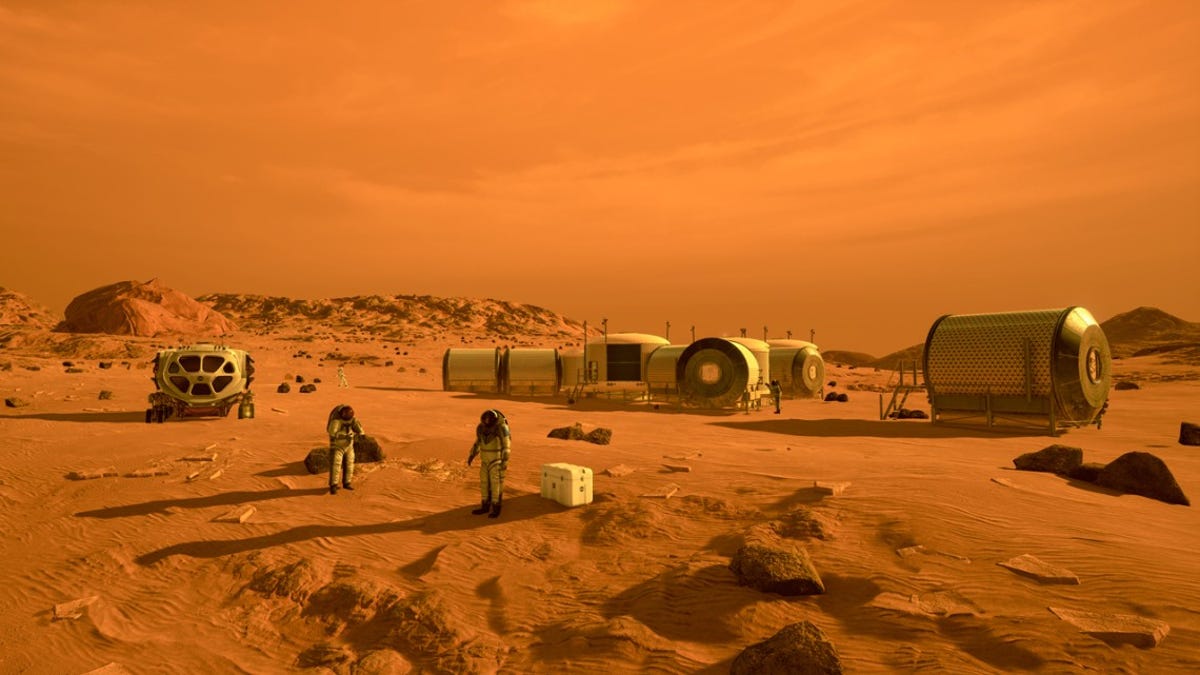
One of the main questions surrounding humanity’s next giant leap into deep space is whether humans can thrive on missions far from Earth. A new theory says yes, but only in environments modeled deeply after our own planet.
Father-daughter research duo Morgan Irons of Cornell University and Lee G. Irons from the Norfolk Institute dub the idea “pancosmorio,” a word that means “all word limit,” in a paper published in Frontiers in Astronomy and Space Sciences last month. Irons and Irons argue that, to allow humans to survive on lengthy treks into deep space, these missions must recreate Earth-like ecosystems, including Earth-like gravity and oxygen, reliable sources of water, as well as societal systems like steady agricultural output and the recycling of waste.
Advertisement
“For humans to sustain themselves and all of their technology, infrastructure and society in space, they need a self-restoring, Earth-like, natural ecosystem to back them up,” said Morgan Irons in a press release from the institution. “Without these kinds of systems, the mission fails.”
Advertisement
Advertisement
The theory almost goes without saying. Of course a long term space mission needs oxygen for astronauts to breathe and a reliable food supply from agriculture, but the pancosmorio theory takes a holistic approach to the problem of human survivability and backs it up within an evolutionary context. The crux of the pancosmorio theory is that humanity has made it this far under certain conditions, and a failure to model those conditions off world will likely serve to doom a deep space mission.
“There are conditions from which human life has evolved. Such conditions are required to sustain human life at its current level of growth,” the scientists write in their study. “The availability of such conditions to humans defines the limit of their world.”
Advertisement
More specifically, the Irons argue that an effective space settlement will need to recreate the environmental and societal networks that have allowed humankind to evolve and thrive on Earth—everything from generating oxygen to recycling waste has to be considered and included. The theory stipulates that the first ingredient is gravity, as human physiology as we know it and the processes that have allowed humankind to develop were all borne out of the Earth’s own gravitational pull.
“Our bodies, our natural ecosystems, all the energy movement and the way we utilize energy is all fundamentally based upon 1G of gravity being present,” Morgan said in the press release. “There is just no other place in space where there is 1G of gravity; that just doesn’t exist anywhere else in our solar system. That’s one of the first problems we must solve.”
Advertisement
Indeed, the issue of potentially not having on-demand access to 1G raises a lot of questions. How would the gravity needs for an extended stay on a space station differ from those of a mission to a planet’s surface? What happens if humans need to survive for extended periods of time on a planet with a fraction of Earth’s gravity? How would something like conceiving and gestating a human embryo work in an environment with gravity that doesn’t match Earth’s?
“Gravity induces a gradient in the fluid pressure within the body of the living thing to which the autonomic functions of the life form are attuned,” Lee G. Irons said in the press release. “An example of gravity imbalance would be the negative affect on the eyesight of humans in Earth orbit, where they don’t experience the weight necessary to induce the pressure gradient.”
Advertisement
Overall, the theory is a convenient way to organize all of the different pieces necessary for a crewed mission to deep space and uses some evolutionary context to back up their importance. What’s exciting is that some of these different pieces are already being studied, just at a smaller scale than these scientists would hope.
Related article: Japan Wants to Bring Artificial Gravity to the Moon
Researchers have demonstrated that splitting carbon dioxide with plasma on Mars and crushing Moon dust could be promising avenues for generating breathable oxygen. Likewise, growing crops on a celestial body like the Moon isn’t so farfetched, as biologists have shown that crops can be grown in lunar soil, albeit not well. Meanwhile, gravity on a space station can theoretically be generated with a rotating module, but generating an Earth-like pull on a planet with gravity that’s a fraction of that on our home planet would most likely require rotating an entire settlement.
Advertisement
No doubt—creating Earth-like conditions away from Earth will be a daunting challenge, but the new paper offers a sensible roadmap for moving forward.
For more spaceflight in your life, follow us on Twitter and bookmark Gizmodo’s dedicated Spaceflight page.
Services Marketplace – Listings, Bookings & Reviews